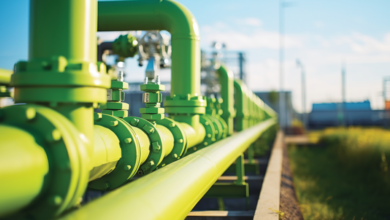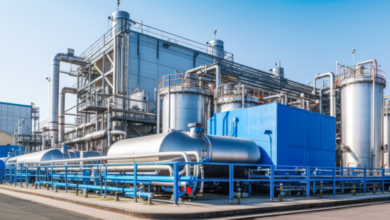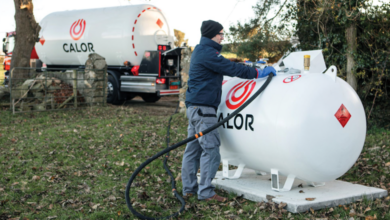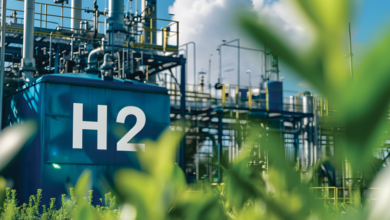France’s plans for hydrogen and biomethane

Ines Bouacida, a senior researcher at the International Sustainability Standards Research Institute (ISSRI), speaks to eolas Magazine about France’s plans for biomethane and hydrogen; a cornerstone of its energy transition.
France has set ambitious targets for biomethane, aiming for it to comprise between 10 per cent and 15 per cent of the gas network by 2030, up from just 3 per cent today. “The goal for biomethane was raised from 35 TWh to 44 TWh by 2030,” Bouacida says, referring to a graph which asserts that fossil fuel-sourced gas will “nearly disappear” from France’s energy mix.
The policy leans heavily on feed-in tariffs, which have driven significant investment. “In the past two years, support for biomethane amounted to €1 billion annually,” she says. Unlike Germany, where biogas production initially focused on combined heat and power (CHP), France prioritises injection into the gas grid. “The injection sector is growing extremely fast – it is where the policies are focusing.”
However, France’s approach is distinct in its emphasis on sustainability. “The idea was to avoid the German model, where large-scale energy crops dominated,” Bouacida explains. Instead, France limits energy crops to 15 per cent of feedstock and promotes small-scale digesters to support farmers. “Intermediary crops, which are grown to protect soil, can also feed digesters, creating a win-win for agriculture and energy.
“Environmental impacts vary wildly depending on farming practices,” she says. While some digesters enable organic farming, others reinforce intensive agriculture. “We can project instances where digesters push farms toward even higher productivity, with trade-offs like nitrogen pollution from digestate spreading.”
With France targeting a four-times increase in biomethane production by 2030, Bouacida raises fundamental questions: “Are we just scaling up current challenges, or will new problems emerge? Competition for crop residues is already driving up costs in some regions.”
Hydrogen
France’s hydrogen strategy, launched in 2020, is highly ambitious but faces delays. “The goal is 6.5GW of electrolysis by 2030, backed by €9 billion in public funding,” Bouacida says. However, progress lags: “Only 300 MW have been built so far, so targets may need revising.”
Hydrogen’s role in decarbonisation is clear, but Bouacida stresses it will not replace fossil gas outright. “In France’s scenarios, gaseous fuels shrink in volume but become critical for security of supply – backing up renewables, heating hard-to-decarbonise buildings, and fuelling heavy transport.”
The challenge, according to Bouacida, is that “hydrogen is expensive and scarce”, meaning that “we must ask where will it add the most value”. She points to steelmaking, where alternatives are few, and warns against inefficient uses like hydrogen cars: “Battery electric vehicles are far more energy-efficient.”
“If we want 150 TWh by 2050, do we sacrifice sustainability or affordability?”
Ines Bouacida, International Sustainability Standards Research Institute (ISSRI)
Biomethane trilemma
Bouacida frames France’s biomethane policy as a trilemma: balancing low cost, low environmental impact, and large-scale availability. “Policymakers hoped to achieve all three, but trade-offs are inevitable,” she says.
For example, strict sustainability rules such as digestate spreading plans can increase costs. “Farmers face conflicting incentives: minimise expenses or reduce pollution? Without the right equipment, digestate spreads at the wrong time, harming soils.”
The looming question is whether France’s 2030 targets are realistic. “If we want 150 TWh by 2050, do we sacrifice sustainability or affordability? These debates are already stalling France’s long-term climate strategy.”
Optimising scarce resources
To optimise scarce resources, Bouacida proposes a hierarchy of end uses for both biomethane and hydrogen. “We need sectoral mandates, like the EU’s Renewable Energy Directive, which prioritises hydrogen for industry.” Contracts for difference (CfDs) are another potential solution: “Germany and the Netherlands use them to de-risk industrial decarbonisation and now France is starting to follow.”
However, redirecting biomethane from buildings to industry requires phasing out gas heating. “Today, injected biomethane mostly heats homes – a low-priority use. Without phase-out policies, we will struggle to shift it to sectors like heavy transport or chemicals.”
Biomethane and hydrogen are at the heart of France’s energy transition and its political tensions. “Biogas is so controversial that it is blocking climate policy discussions,” Bouacida observes. Nevertheless, she remains pragmatic: “By defining clear priorities, we can align conflicting interests and optimise limited resources.”
For now, France’s path forward rests on scaling up sustainably. “The next five years will show whether this model works or if ambition outpaces reality,” Bouacida concludes.





